For at least several thousand years, the Sahara was lush green, bustling with life. The ancient Egyptians could farm, raise livestock and live in prosperity. For some unknown reason the situation changed, the monsoon clouds moved south, the rains stopped, and green, fruitful soil turned slowly into the desert.
Today, the Sahara desert is just sand dunes and hellish heat. But if you want to learn about it below are a few facts about the Sahara Desert.

Interesting Facts about Sahara Desert
Where is the Sahara desert
The Sahara desert lies in Northen Africa and stretches from the Atlantic Ocean in the west to the Red Sea in the east. North Africa is home to quite a few richest countries in Africa.
To the north, it is bordered by the Atlas Mountains and the Mediterranean Sea. To the south, it borders on a geographic region known as the Sahel.
How big is the Sahara Desert?
The width of the Sahara is about 2 thousand km and the area is estimated at over 9 million km2 (3,6 million square miles). In comparison, Sahara is almost as big as China 9.6 km2, or the United States 9.8 km2, however, Sahar is the third largest desert in the world but largest hot desert, the other two are Antarctic Polar Desert and Arctic Polar Desert.
Map of Sahara desert
The desert occupies the territory of 11 countries: Morocco, Algeria, Chad, Egypt, Libya, Mali, Mauritania, Tunisia, Western Sahara, Niger, Chad, and Sudan.
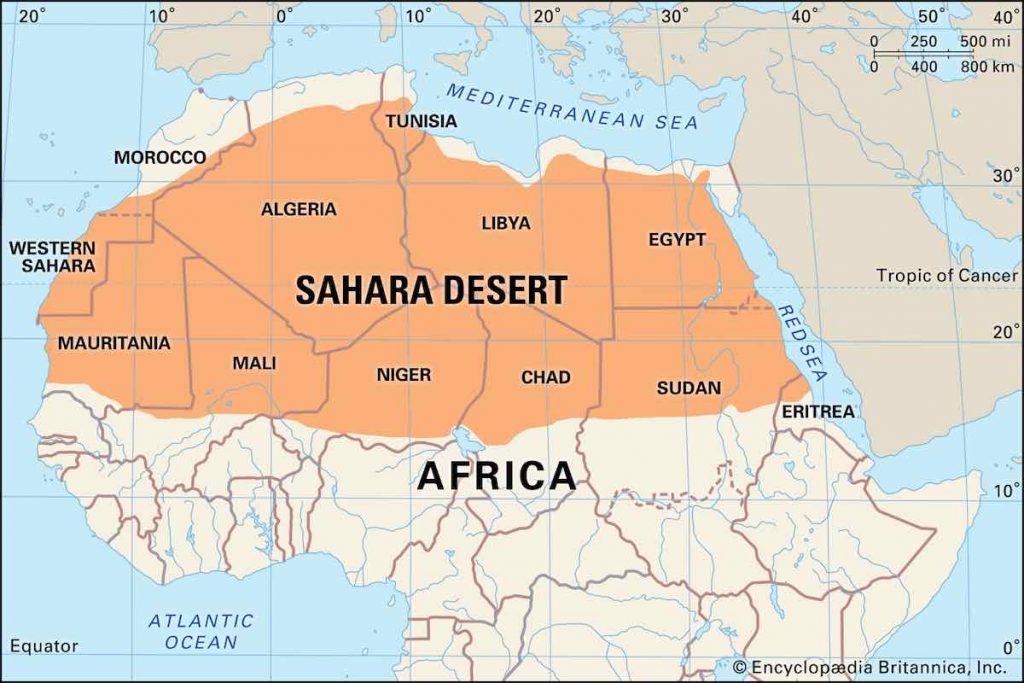
The climate of the Sahara
Most of the Sahara desert are territories with an annual rainfall of less than 50 mm / m2 and, in the vicinity of the Tropic of Cancer, even less than 20 mm / m2.
The lack of rainfall is more pronounced in the eastern Sahara, as the climate is more continental.
Temperature and clouds over the Sahara desert.
As there are no rains, no clouds are formed, the sky is clear. The lack of clouds also causes the occurrence of large daily temperature amplitudes, when the sun goes down there is no need to keep the heat at the surface. During the day, the average temperatures are 30-35 degrees C, the maximum temperatures can be from 50-55 degrees C. At night, the temperature drops to 10-20 degrees C, and can also drop below 0.
The Sahara landscape – known and unknown
It consists of 14 smaller deserts that differ in the appearance of the landscape. Most of the Sahara is made up of hamadas, or rocky deserts.
It is a landscape dominated by bare rocks, boulders and sometimes gravel. The sand was blown from them as a result of the deflation process. Ergi-sandy deserts form a small part of the Sahara desert.
River on the desert
There is only one constant river flowing through the Sahara desert. It is the Nile (the longest river in the world) with its tributary, the Blue Nile.
Many rivers in the Sahara are periodic, episodic in nature. They only exist at certain times of the year when heavy rainfall occurs in their basins.
Oases
There are oases in the desert thanks to underground rivers or aquifers.
These are largely relict waters, non-renewable, from the periods when the Sahara desert had a much wetter climate. In the central part of Algeria there is a natural area about 160 km long containing a series of small oases. Several cities and many villages were built there.
Highest Mountains and Dunes in Sahara
The highest point in the desert is the inactive volcano in the Tybesti Mountains, Emi Koussi, 3,415 m high.
Recently, the volcano was active over a million years ago.
Desert Lakes
The largest lake in central Africa is Lake Chad. It is the most important source of drinking water for humans, animals and plants, and is used by around 30 million people. Over the past 50 years, the lake has lost most of its water to climate change and human activity.
Inhabitants of Sahara
Most of the inhabitants of the Sahara desert are nomads. The Tuaregs are the most numerous tribe. Their occupation is barter with the inhabitants of the oases. Wanderers provide milk, meat and pack animals in exchange for grain, dates, coffee, salt, weapons and ammunition. Caravans move with the help of camels, mules, donkeys, along the beaten track.
The population density in the Sahara is low, amounting to one person per square kilometer.
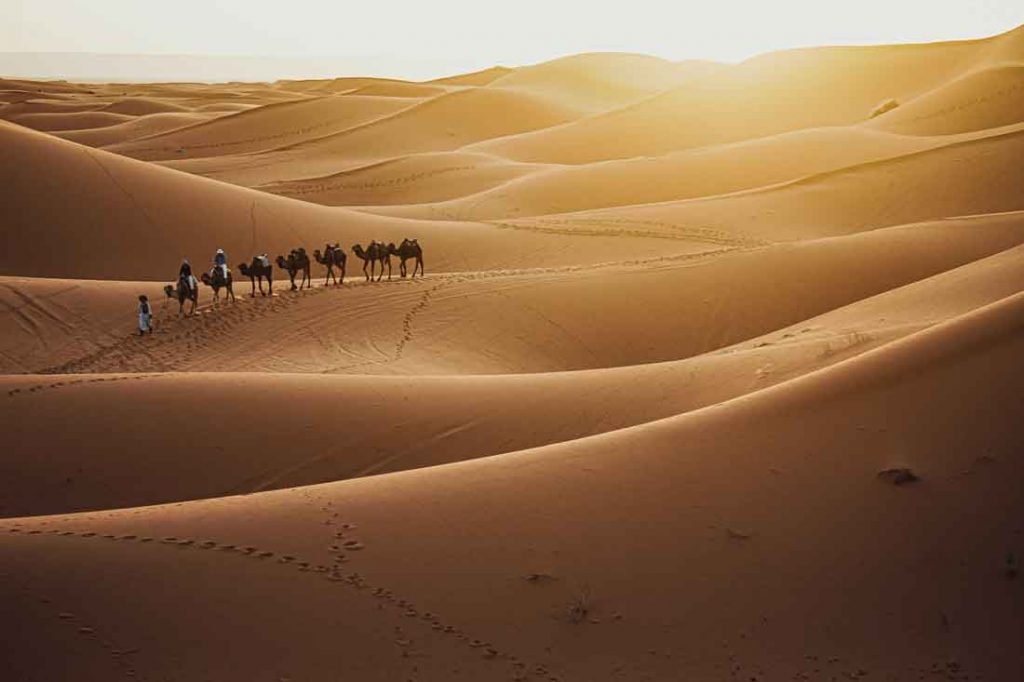
Animals in Sahara
Despite the hot weather and the lack of water, many organisms have adapted to the conditions in the Sahara.
The plants most often include palm trees, thorny shrubs, grasses, and various types of succulents. The most common animals that live in the Sahara are lizards, snakes, scorpions as well as small mammals such as the rock hyrax or desert fennel – one of the smallest representatives of canids.
The most domesticated animals in the Sahara desert are camels and goats.
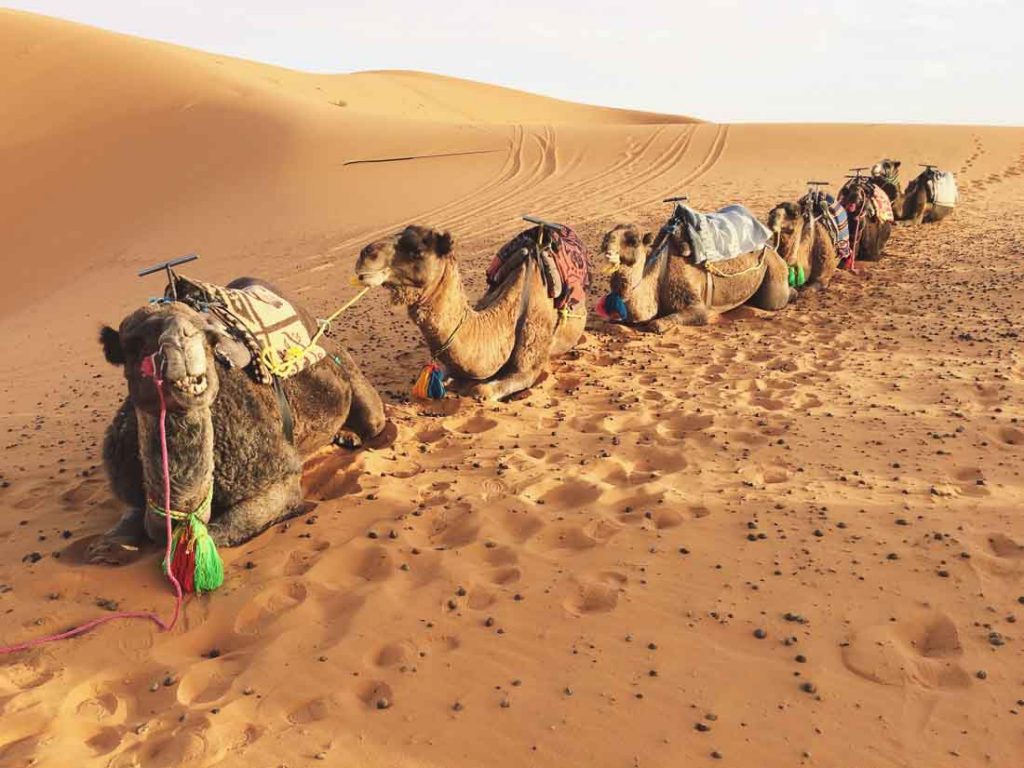
When Sahara will be green again?
Due to the change in the angle of the earth’s axis, the Sahara, every 41 thousand years turns into a savanna full of lush grasses. The next such change is expected in 15 thousand years.
Archaeological discoveries on Sahara
In Egypt, about 150 km from Cairo, there is a site where over 400 different skeletons of prehistoric cetaceans have been found, including a complete skeleton of basilosaurus.
Many Neolithic rock paintings have been found in the National Park of Algeria. The drawings identified so far are large, wild animals (antelopes and crocodiles), herds of cattle and humans. This proves that 10-12 thousand years ago the Sahara was inhabited by various organisms savannah.
The Sahara – Facts – Pin it
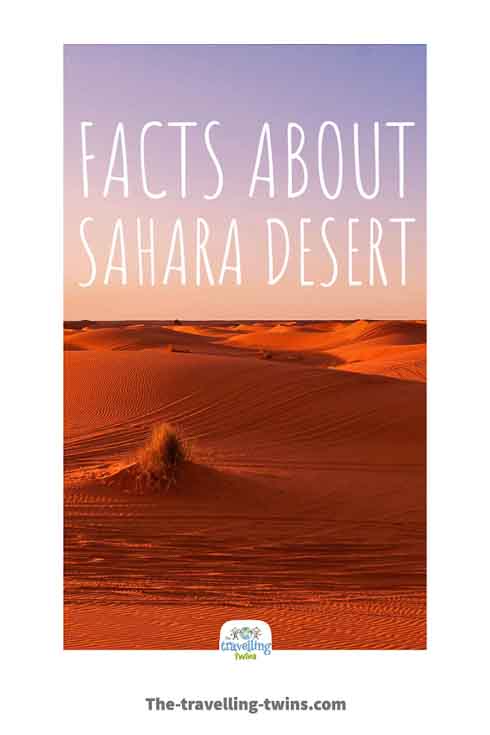
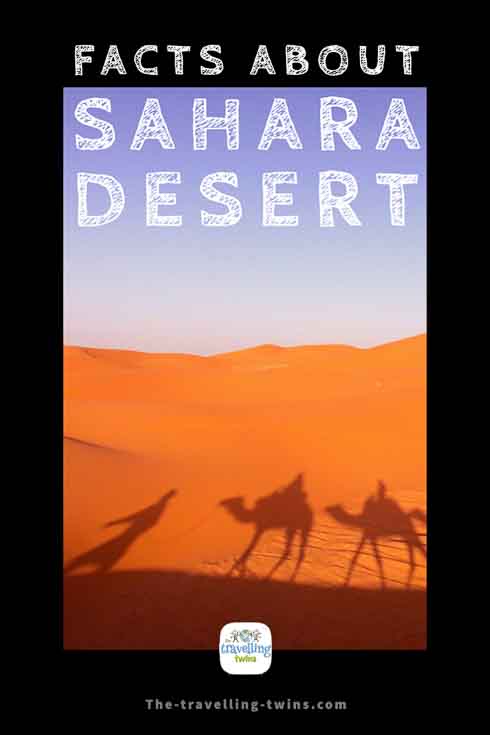
Privacy Policy Disclaimer
This website uses affiliate links for income and support.
If you like our website, please consider using these links. You will be directed to the vendor, and we will get a small commission on your purchase price at no increased cost to you.
We have researched facts stated here as far as practicable but please check anything critical before committing your time and money. We do not claim any special knowledge or expertise, and we are not consultants for our readers.